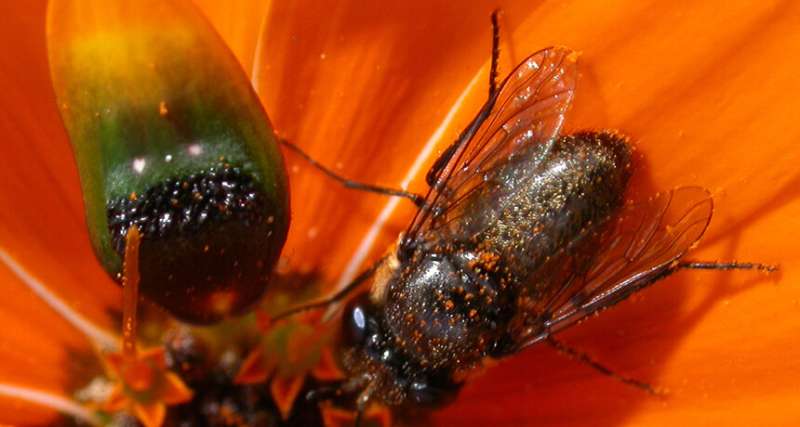Science Daily March 23, 2023
Gene co-option, the redeployment of an existing gene in an unrelated developmental context, is an important mechanism underlying the evolution of morphological novelty. In most cases novel traits emerged by co-option of a single gene or genetic network. An international team of researchers (UK, South Africa) has shown that the integration of multiple co-opted genetic elements facilitated the rapid evolution of complex petal spots that mimic female bee-fly pollinators in the sexually deceptive South African daisy. They explained that co-option of iron homeostasis genes altered petal spot pigmentation, producing a color similar to that of female pollinators; co-option of the root hair gene enabled the formation of enlarged papillate petal epidermal cells; co-option of the miR156-GdSPL1 transcription factor module altered petal spot placement, resulting in better mimicry of female flies resting on the flower. The three genetic elements were likely co-opted sequentially. According to the researchers their findings suggest that gene co-options can combine in a modular fashion, enabling rapid evolution of novel complex traits… read more. Open Access TECHNICAL ARTICLE

A real fly (right) lands on a daisy petal next to the fake fly (left). Credit: Roman Kellenberger/ University of Cambridge.